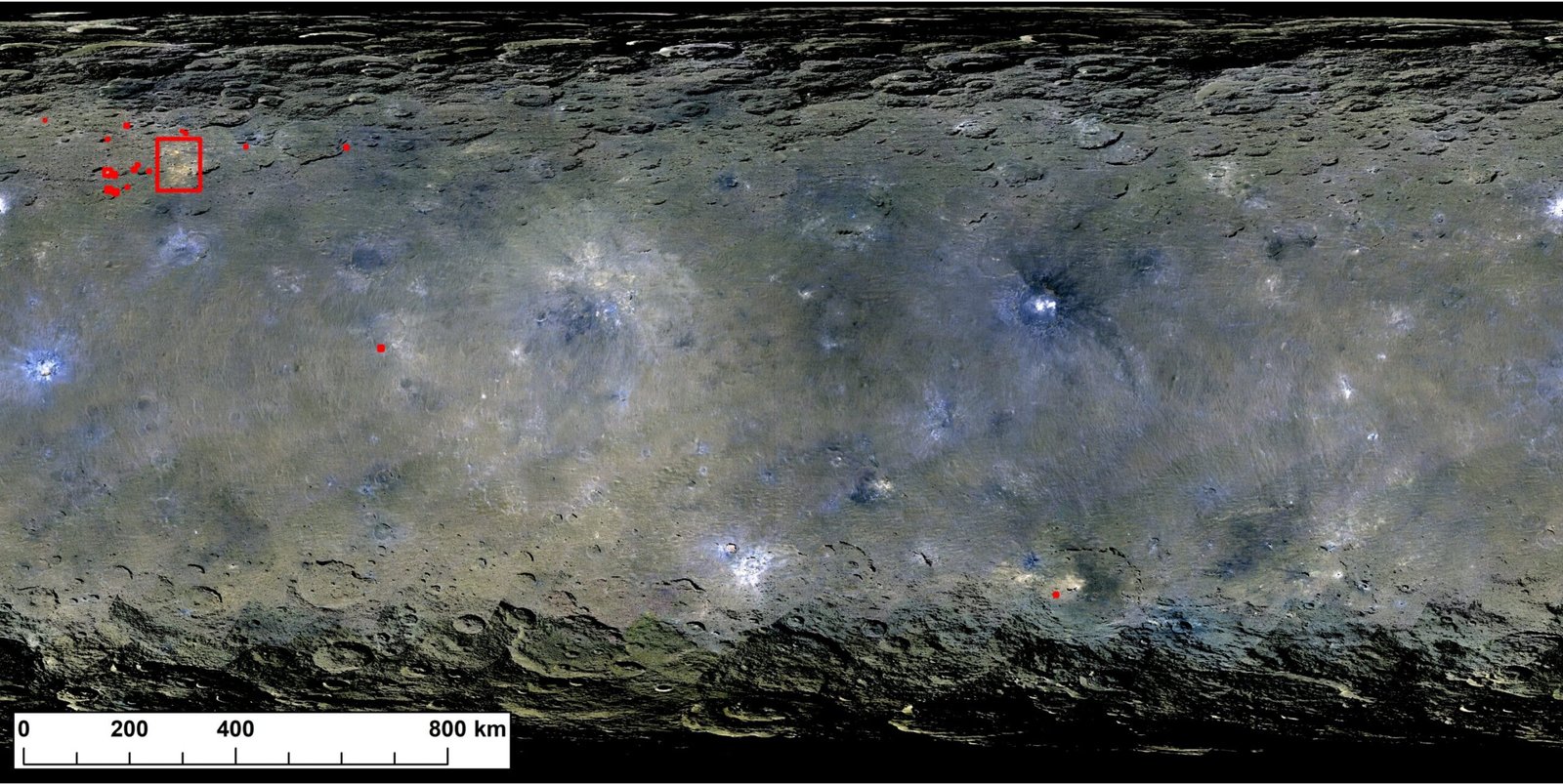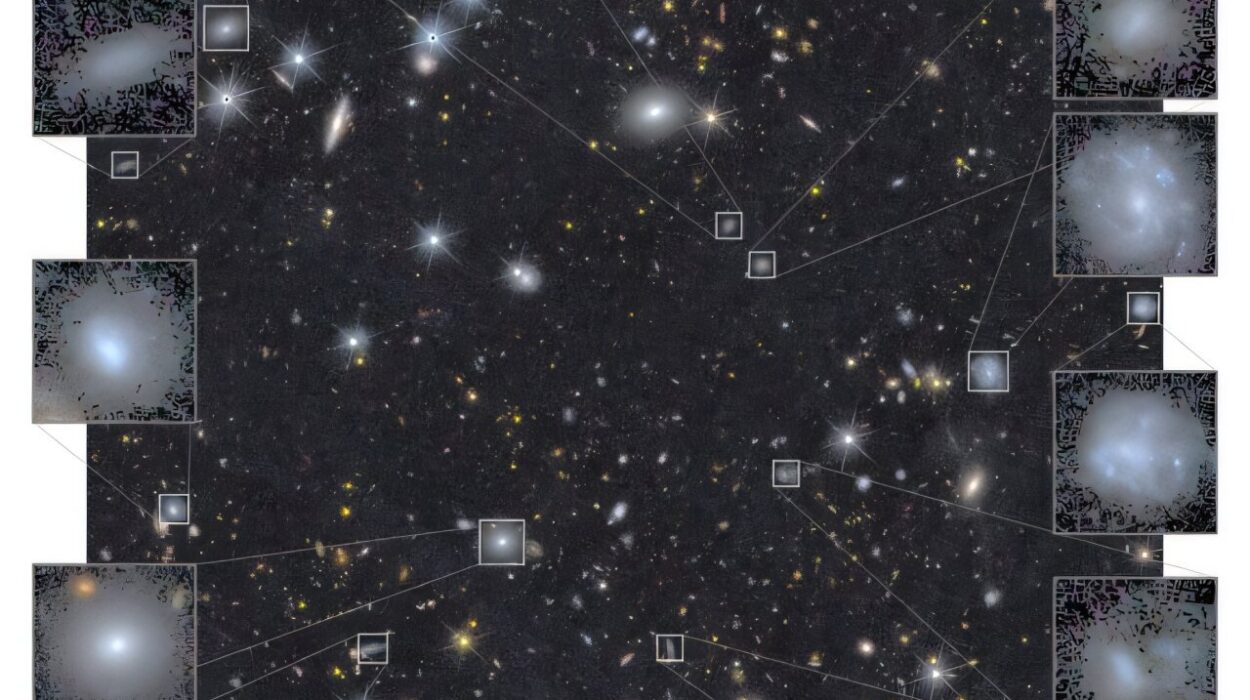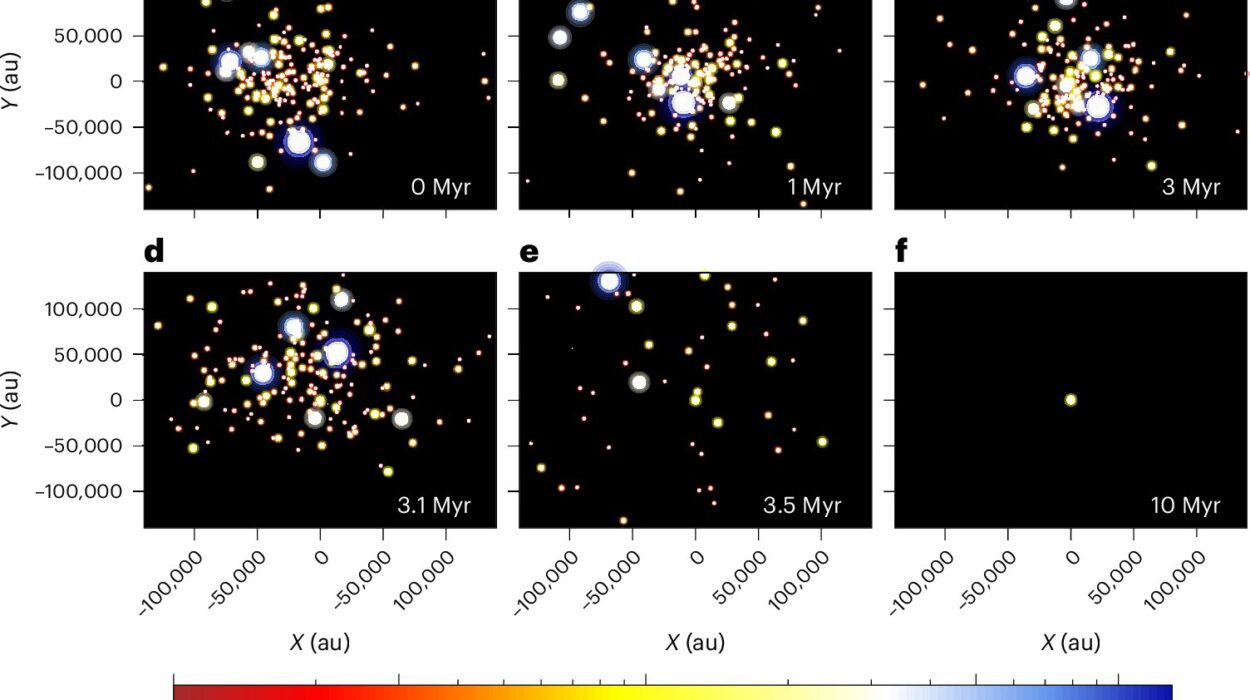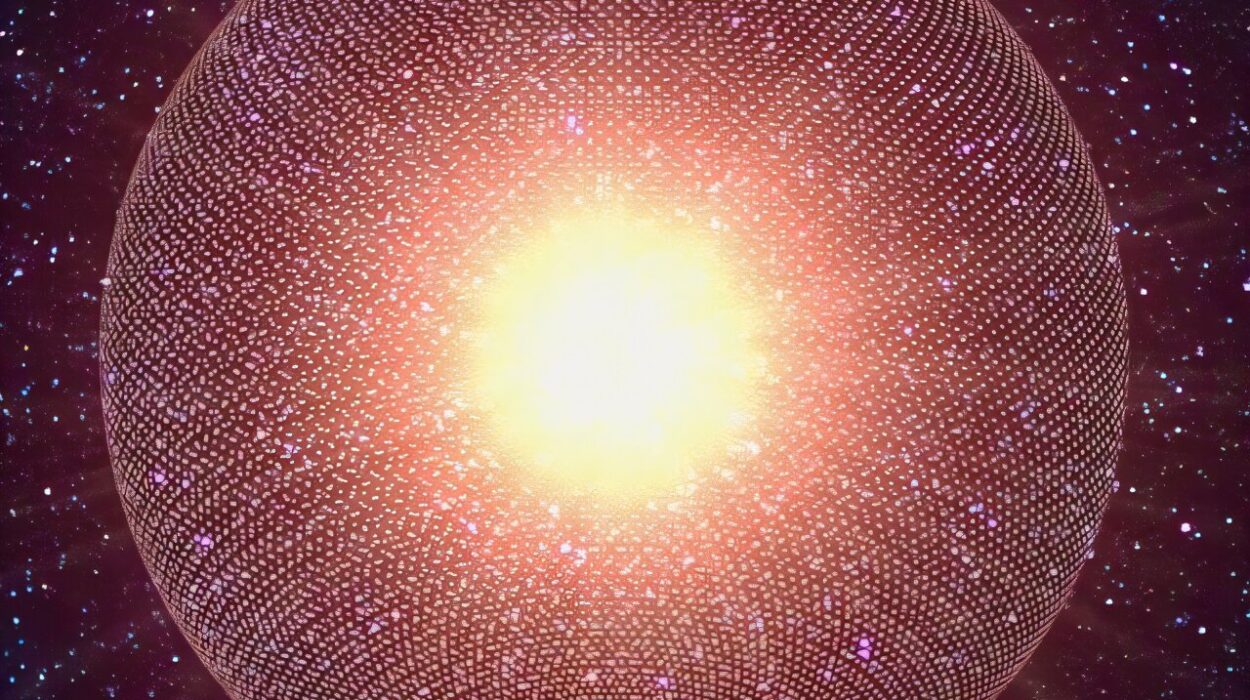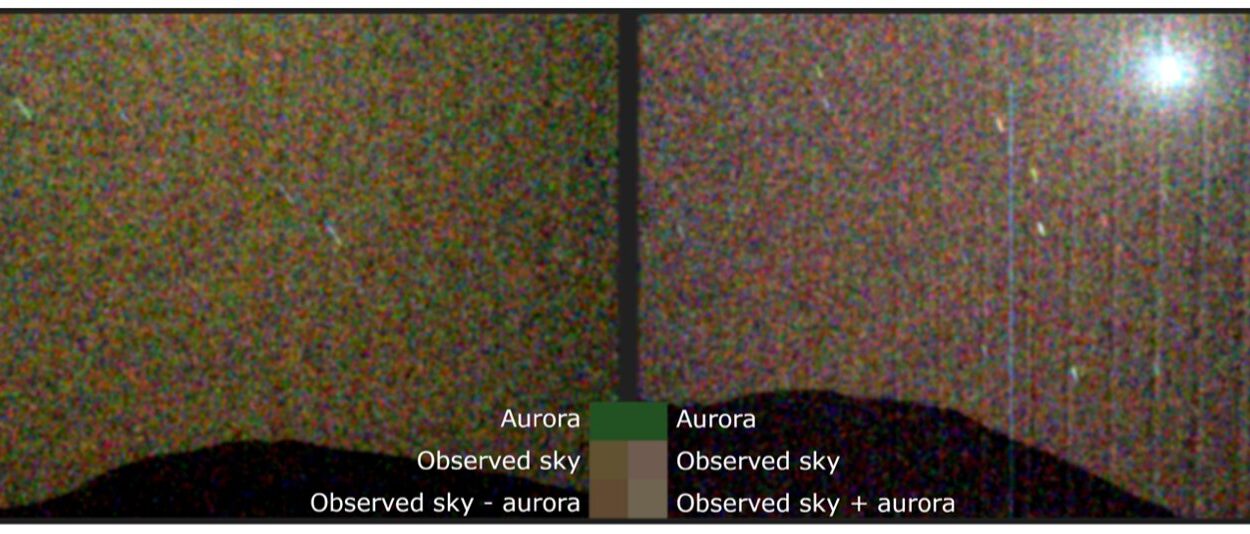The discovery of organic material on Ceres, a dwarf planet located in the asteroid belt, has intrigued scientists for years. Recent research, led by the Max Planck Institute for Solar System Research (MPS) in Germany, provides a deeper understanding of the origins of these organic compounds. Their study, published in the journal AGU Advances, presents a comprehensive analysis of Ceres’ surface, with a particular focus on how these organic materials may have arrived on the dwarf planet. The study’s findings suggest that these compounds likely have an exogenic origin, meaning they were likely brought to Ceres by impacting asteroids from the outer asteroid belt rather than originating from Ceres itself.
This groundbreaking research sheds light on the complex processes that may have contributed to the development of habitable conditions in the early solar system. The study also highlights the significant role that asteroids and other small bodies in the outer solar system might have played in the delivery of the building blocks of life to various locations in the inner solar system.
Organic Molecules: Building Blocks of Life
On Earth, organic molecules—compounds consisting primarily of carbon, hydrogen, and, in smaller quantities, other elements—form the essential building blocks of life. These molecules can take a wide variety of forms, but in the most basic sense, they provide the structure necessary for life as we know it. In recent years, scientists have detected organic molecules on distant objects in the solar system, such as comets, trans-Neptunian objects, and asteroids in the outer solar system.
This discovery is of great significance because it suggests that organic molecules may have been widespread in the early solar system, potentially forming the basic configuration of many celestial bodies from the very beginning. These molecules could have made their way into the inner solar system over time, possibly contributing to the conditions needed for life on planets like Earth. The detection of organic material on Ceres adds another intriguing piece to this puzzle, and researchers are eager to learn more about its origins.
Ceres: An Enigmatic World
Ceres occupies a unique location in the solar system: it lies in the asteroid belt between Mars and Jupiter. This position is key to understanding the potential origins of the organic material found on its surface. Ceres is not clearly native to the inner or outer solar system, making its study particularly important for understanding the dynamics of the early solar system and the potential for habitability on other worlds.
Previous studies suggested that Ceres may have originated from the asteroid belt, though this remains a subject of ongoing research. As such, scientists are interested in determining whether the organic material discovered on its surface was native to the dwarf planet or whether it arrived later through external processes, such as asteroid impacts.
The Dawn Mission: A Treasure Trove of Data
The search for organic material on Ceres was significantly advanced by NASA’s Dawn mission, which arrived at the dwarf planet in March 2015. The Dawn spacecraft spent nearly three and a half years orbiting Ceres, using a suite of scientific instruments to study the planet’s surface in unprecedented detail. The Dawn spacecraft’s scientific camera system and VIR spectrometer, both critical tools in the mission, scanned the surface and collected valuable data that would eventually lead to the discovery of organic deposits.
The Dawn Framing Cameras provided high-resolution images of Ceres, revealing patches of material on the surface that appeared to be organic. The VIR spectrometer broke down the light reflected off these areas into its constituent wavelengths, allowing scientists to detect and identify the presence of organic compounds. However, despite these advances, remote sensing alone could not definitively identify the exact types of organic molecules present. The compounds detected were determined to be aliphatic hydrocarbons, molecules with a chain-like structure that are commonly found in organic material.
Artificial Intelligence and the Search for Organic Material
For the first time, the MPS team used artificial intelligence (AI) to analyze the vast amount of data collected by the Dawn spacecraft. This AI analysis combed the entire surface of Ceres, identifying areas with traces of organic material that had not been previously recognized. The researchers used the AI to detect subtle patterns in the data that would otherwise be difficult to discern, allowing them to find previously unknown deposits of organic material.
According to Ranjan Sarkar, the lead author of the study, the presence of organic molecules on Ceres is rare, and these deposits do not show signs of being associated with cryovolcanic activity. Cryovolcanism—a form of volcanic activity involving the eruption of icy brines—had been thought to be a potential source of organic material on Ceres, but the researchers found no evidence to support this theory.
No Evidence of Cryovolcanism or Tectonic Activity
Ceres is known to have a unique form of cryovolcanism, where briny water from the interior of the dwarf planet erupts to the surface in a process similar to volcanic activity. However, the new study revealed that the organic material on Ceres does not appear to be linked to this cryovolcanic activity. Instead, the researchers found that the deposits of organic molecules were located away from known cryovolcanic regions, and there was no evidence of associated tectonic or volcanic activity at the sites of the organic deposits. In fact, the geological features at these sites did not show any signs of recent or past volcanic activity, such as trenches, canyons, volcanic domes, or vents.
Martin Hoffmann, a researcher at MPS, further emphasized this point, stating that there were no deep impact craters near the organic deposits. This finding suggests that the organic material may have arrived on Ceres through asteroid impacts rather than internal processes.
Impacts from the Outer Asteroid Belt
The researchers hypothesize that the organic compounds on Ceres most likely came from asteroids in the outer asteroid belt, which frequently collide with Ceres. Computer simulations of the impact history of Ceres suggest that these outer asteroids are among the most likely sources of the organic material found on its surface.
Interestingly, the study notes that the outer asteroid belt contains many objects that would not have generated much heat upon impact. This means that organic compounds, which are often fragile and can decompose under high temperatures, could have survived the impacts relatively intact. In contrast, impacts from objects in the inner solar system are generally more energetic, generating more heat and making it less likely that organic material would survive.
While Dawn was able to detect the presence of organic material on Ceres, the spacecraft was not capable of detecting all types of organic compounds. As a result, it is possible that other, more complex building blocks of life may exist on Ceres, potentially formed in its underground ocean or other subsurface environments.
What’s Next: A Landed Mission to Ceres?
Given the limitations of remote sensing, Andreas Nathues, head of the Dawn camera team, suggests that a future lander mission to Ceres could provide more direct evidence of organic material within the dwarf planet’s interior. Such a mission could collect samples directly from Ceres’ surface and subsurface, allowing for more detailed chemical analysis of the organic compounds and helping to determine whether they originated on Ceres or were delivered by external sources.
The findings from the Dawn mission and the new study from the Max Planck Institute significantly enhance our understanding of the complex processes that have shaped Ceres and other bodies in the asteroid belt. While the organic material on Ceres may not have originated from the dwarf planet itself, its presence still raises intriguing questions about the potential for habitability elsewhere in the solar system. The study also suggests that objects in the outer solar system may have played an important role in the delivery of the necessary building blocks of life to worlds in the inner solar system.
As scientists continue to unravel the mysteries of Ceres and other distant bodies, the possibility that organic material was widespread in the early solar system—and may still be arriving on planets like Earth—remains an exciting area of research. With future missions like landers and sample-return missions, we may soon be able to answer some of the most fundamental questions about the origins of life in our solar system and beyond.
Reference: R. Sarkar et al, Ceres: Organic‐Rich Sites of Exogenic Origin?, AGU Advances (2025). DOI: 10.1029/2024AV001362
